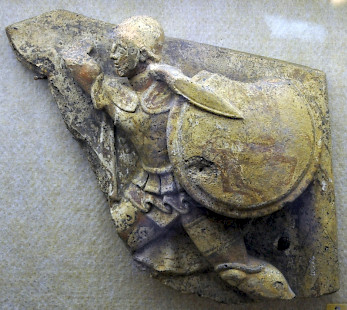Hernici
Q930242Hernici: ancient people, living in the valley of the Tolerus River. They appear to have been an ally and later an enemy of archaic Rome.

In the course of the Iron Age, the people of Central Italy, who had been living in hilltop settlements, increasingly started to live in larger groups, often consisting of several older settlements. In the coastal area, with access to the sea and easy roads on the plains, this process culminated in the growth of real cities, like Antium, Satricum, archaic Rome, Praeneste, Veii, and Caere. In the hilly interior, this process was a bit slower, but larger political units were created as well, which are often, for lack of anything better, labeled as "tribal". From north to south, we can discern four people: the Sabines in the valley of the river Tiber, the Aequi, the Hernici in the valley of the Tolerus (or Trerus) River (modern Sacco), and the Volsci.
The powerful kings of Rome (e.g, Tarquin the Proud) were able to keep those tribes away, but after the collapse of the Roman monarchy in the final decade of the sixth century, the Aequi and Volsci started to migrate to the plains. The Aequi seized political control of eastern Latium, while the Volsci are often mentioned in southern Latium, on the Pontine Plain.
The Hernici, which lived halfway the Aequi and Volsci, allied themselves to this Latin League, which was created by the Romans to counter the threat (Foedus Cassianum). The Hernici are mentioned several times as joining a Roman campaign against the common enemies. This alliance was very important for Rome, because the Via Latina, which connected the city to the Greek towns in the south (e.g., Capua), passed through the valley of the Tolerus.
In the first half of the fourth century, the Romans had restored control in Latium. In the second half of this century, they would go on to attack the mountain people. There were several conflicts with the Hernici. Several towns surrendered and were recognized as free towns (Aletrium, Ferentinum, Verulae), but the largest Hernician town, Anagnia, was sacked.
The Hernici appear to have spoken an Osco-Umbrian language.